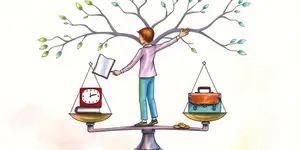
In a world where market shifts can occur overnight and unexpected crises can upend the best-laid plans, adopting a forward-looking mindset is no longer optional. By weaving strategic analysis into your decision-making, you can equip your team to navigate uncertainty and seize new opportunities with confidence. Embracing what-if analysis empowers leaders to anticipate challenges before they arise, envision alternative futures, and build resilient strategies that stand the test of time. This powerful tool transforms guesswork into actionable insights, offering a lifeline when conditions change or risks materialize. Let us explore how to harness this technique and unlock your organization’s potential.
What-if analysis is more than a spreadsheet exercise; it is a mindset that invites exploration and creativity. At its core, this approach examines how changes in key variables—economic trends, customer behavior, or operational costs—can reshape your outcomes. By simulating best-case, worst-case, and base-case scenarios, teams gain a panoramic view of possibilities and can steer toward paths that maximize success. The real power comes from insight: knowing in advance which levers to pull when external forces shift and which investments will yield the greatest resilience.
To bring theory into practice, follow a structured process that breaks down complex uncertainties into manageable steps.
In today’s data-rich environment, leveraging the right tools can sharpen your analysis and streamline scenario evaluation. Microsoft Excel’s Scenario Manager offers an accessible entry point for small teams, while advanced analytics platforms empower larger organizations to process vast datasets and automate stress tests. Integrating real-time data feeds, predictive models, and visualization dashboards elevates your approach, enabling financial metrics and market position to update dynamically. The result is a robust system that adapts to new information, reducing manual effort and enhancing confidence in every projection.
Beyond the immediate insights, what-if analysis delivers transformative benefits that touch every corner of an organization. By embedding this practice into your strategic routine, you cultivate agility, foresight, and a willingness to innovate that sets industry leaders apart, driving long-term success.
Stress testing takes what-if analysis a step further by focusing on extreme events—economic shocks, regulatory upheavals, or rapid technological disruptions—that push your organization to its limits. By simulating severe conditions, teams can evaluate financial stability, operational capacity, and strategic agility under pressure. Whether using bottom-up methods to understand customer-level impacts or top-down approaches for macroeconomic assessment, stress testing builds upon scenario planning to pivot with confidence and clarity when the unexpected strikes.
While each organization faces unique challenges, certain scenarios recur across industries. Testing these situations can reveal hidden vulnerabilities and untapped opportunities. By evaluating these situations regularly, you cultivate a culture of proactive resilience that empowers teams to act swiftly.
Combining what-if analysis with stress testing creates a comprehensive framework for resilience. By iterating through scenarios, refining inputs, and updating assumptions, decision-makers maintain a dynamic strategy that evolves with the business landscape. This integration fosters robust decision-making under uncertainty and ensures that contingency plans are grounded in rigorous analysis rather than intuition. Ultimately, it positions your organization to thrive when challenges arise and to seize new horizons when conditions improve.
Begin by assembling a cross-functional team that includes finance professionals, operations experts, and strategic thinkers. Allocate time and resources for scenario workshops, data collection, and model calibration. Choose tools that match your organization’s sophistication, from simple spreadsheets to advanced analytics platforms. Establish a regular cadence for revisiting scenarios and stress tests—monthly, quarterly, or in response to major events. By institutionalizing what-if analysis and stress testing, you embed proactive risk management into your culture and create a lasting competitive edge.
References













